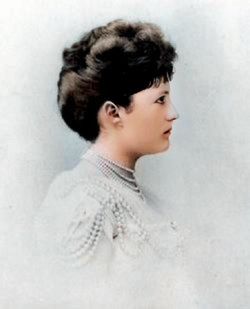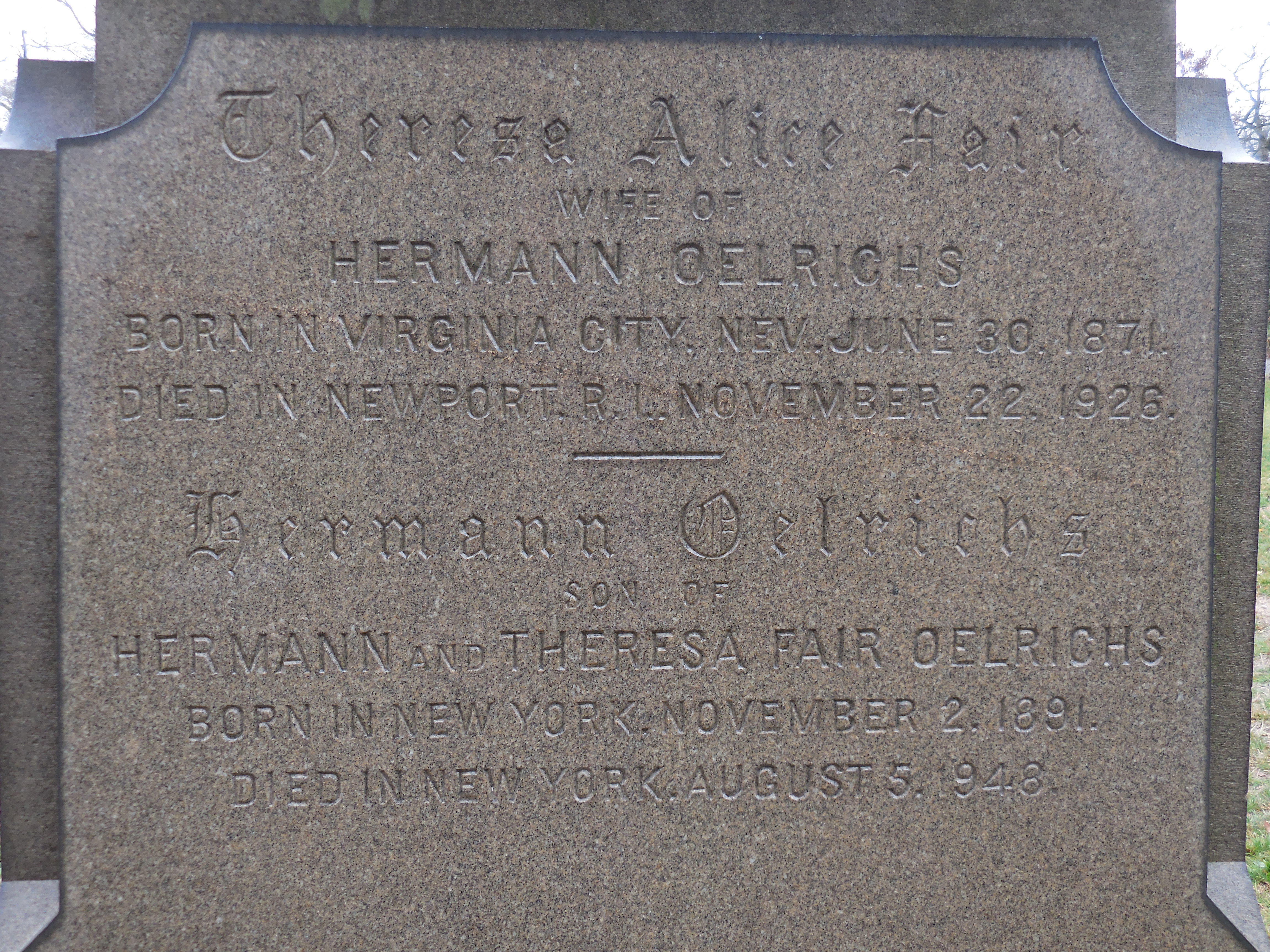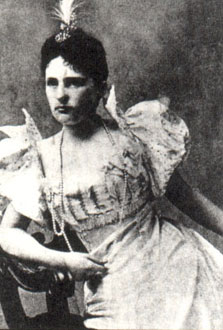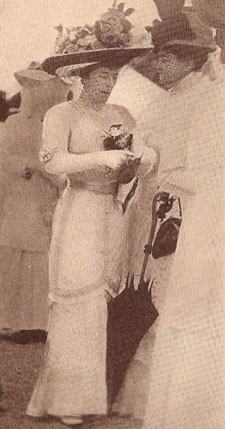With this money, they purchased in New York City, for the sum of $167,000, the marble townhouse of the late Mary Mason Jones. Since the mansion was considerably old, the Oelrichs felt it needed a renovation. 2 years later, and $150,000, and the mansion was complete. Shortly afterwards, James Fair passed away, leaving an inheritance of $50 million to Tessie and the same to Virginia, who had married the son of William K Vanderbilt, Willie. Nevertheless, Tessie felt that she and Hermann needed a Newport residence, as they were trying to break into Newport's rigid High Society. They had architect Stanford White construct an H-shaped plan "cottage", which she named Rosecliff. Before the house was completed, Tessie gave a large ball in the unfinished ballroom to announce the Oelrichs's arrival in Newport. Once completed, the total cost was $264,000. The ballroom would see many more lavish parties during the social season. The most famous being her "Bal Blanc" Ball, which highlighted the Astor Cup Race in August 1904. Tessie Oelrichs decorated Rosecliff with white hydrangeas, roses, orchids, and lilies, ordered white swans for the fountain, and had a fleet of white ships constructed to float on the shore beyond the estate. Tessie was a very careful woman, fearful that people were after her money. She distrusted every single one of her servants and she kept records on everyone of them, labeling "Good", "Bad" and "Rotten".
Each morning, at precisely nine, she made an cleaning inspection of every room in the house. Then she would tour her garage and stables. Cleanliness was next to godliness. Every bed had to be made up fresh everyday, and if there were a marble floor in need of a scrub, she wouldn't hesitate to take the mop and pail and go at it. "When I die," she used to say, "bury me with a cake of Sapolio in one hand and a scrubbing brush in the other. Those are my symbols." Her obsession finally caught up with her, and once while scrubbing her marble floors, at carpet tack flew into her eye and blinded her in her left eye. She also had trouble hearing, and the only way to speak to her was to shout. She was the victim of a horrible disease with which she put on weight rapidly. The result was her starving herself and exercising till she fainted. She spent thousands of dollars on buying the latest exercise equipment and, if needed, she had her strongest servants tie her corsets on her as tight as they went, she having to grab onto a chair because it was such a struggle, a gross breach of etiquette that was airily dismissed. Tessie and Hermann grew apart in their later years of marriage and they were rarely seen together. They had no problem arguing together in front of servants, family or even guests. Tessie spent most of her time in Newport and in New York City, while Hermann in San Francisco and Baltimore. Despite being the daughter of a Democrat and also the wife of one, Tessie was a supporter of the Republican Party. This was most likely because she lived in a very conservative area and most of her friends were Republicans. Tessie spent her last years at Rosecliff, which today is owned by The Preservation Society of Newport County.
With this money, they purchased in New York City, for the sum of $167,000, the marble townhouse of the late Mary Mason Jones. Since the mansion was considerably old, the Oelrichs felt it needed a renovation. 2 years later, and $150,000, and the mansion was complete. Shortly afterwards, James Fair passed away, leaving an inheritance of $50 million to Tessie and the same to Virginia, who had married the son of William K Vanderbilt, Willie. Nevertheless, Tessie felt that she and Hermann needed a Newport residence, as they were trying to break into Newport's rigid High Society. They had architect Stanford White construct an H-shaped plan "cottage", which she named Rosecliff. Before the house was completed, Tessie gave a large ball in the unfinished ballroom to announce the Oelrichs's arrival in Newport. Once completed, the total cost was $264,000. The ballroom would see many more lavish parties during the social season. The most famous being her "Bal Blanc" Ball, which highlighted the Astor Cup Race in August 1904. Tessie Oelrichs decorated Rosecliff with white hydrangeas, roses, orchids, and lilies, ordered white swans for the fountain, and had a fleet of white ships constructed to float on the shore beyond the estate. Tessie was a very careful woman, fearful that people were after her money. She distrusted every single one of her servants and she kept records on everyone of them, labeling "Good", "Bad" and "Rotten".
Each morning, at precisely nine, she made an cleaning inspection of every room in the house. Then she would tour her garage and stables. Cleanliness was next to godliness. Every bed had to be made up fresh everyday, and if there were a marble floor in need of a scrub, she wouldn't hesitate to take the mop and pail and go at it. "When I die," she used to say, "bury me with a cake of Sapolio in one hand and a scrubbing brush in the other. Those are my symbols." Her obsession finally caught up with her, and once while scrubbing her marble floors, at carpet tack flew into her eye and blinded her in her left eye. She also had trouble hearing, and the only way to speak to her was to shout. She was the victim of a horrible disease with which she put on weight rapidly. The result was her starving herself and exercising till she fainted. She spent thousands of dollars on buying the latest exercise equipment and, if needed, she had her strongest servants tie her corsets on her as tight as they went, she having to grab onto a chair because it was such a struggle, a gross breach of etiquette that was airily dismissed. Tessie and Hermann grew apart in their later years of marriage and they were rarely seen together. They had no problem arguing together in front of servants, family or even guests. Tessie spent most of her time in Newport and in New York City, while Hermann in San Francisco and Baltimore. Despite being the daughter of a Democrat and also the wife of one, Tessie was a supporter of the Republican Party. This was most likely because she lived in a very conservative area and most of her friends were Republicans. Tessie spent her last years at Rosecliff, which today is owned by The Preservation Society of Newport County.
















